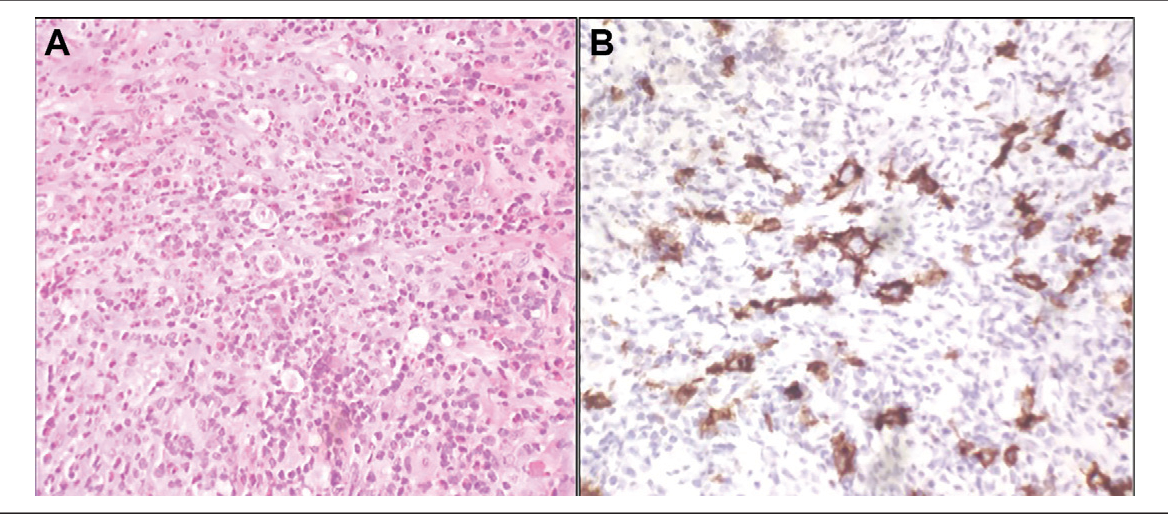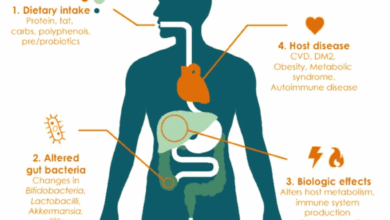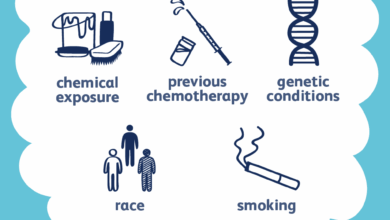
Hodgkins lymphoma dental implications – Hodgkin’s lymphoma dental implications are crucial for patient well-being. This exploration delves into the potential oral manifestations of this disease, the impact of treatments like chemotherapy and radiation, and the vital role of dental professionals in managing oral health throughout the journey. Understanding these implications is key to providing comprehensive care for patients facing this challenge.
The discussion covers everything from the basics of Hodgkin’s Lymphoma, its various types and risk factors, to the specific dental procedures that might be affected. We’ll also explore the importance of close collaboration between oncologists and dentists, the necessity of regular checkups, and strategies to minimize the impact of treatments on oral health. Detailed tables illustrate disease types, symptoms, treatments, and potential oral complications.
Introduction to Hodgkin’s Lymphoma
Hodgkin lymphoma is a type of blood cancer that originates in the lymphatic system, a network of tissues and organs that fight infection. It’s characterized by the abnormal growth of lymphocytes, a type of white blood cell, leading to the formation of tumors in lymph nodes and other lymphatic tissues. Understanding its various forms, risk factors, symptoms, and diagnostic procedures is crucial for early detection and effective treatment.
Types of Hodgkin Lymphoma
Hodgkin lymphoma is categorized into different subtypes, each with varying characteristics and prognoses. The most common subtypes include nodular sclerosis, mixed cellularity, lymphocyte-rich, and lymphocyte-depleted. These classifications are based on the microscopic appearance of the cancerous cells and the presence of Reed-Sternberg cells, a unique type of abnormal cell. Nodular sclerosis is the most frequent subtype, often presenting with a favorable prognosis.
Mixed cellularity and lymphocyte-rich subtypes can have a varied prognosis, depending on individual factors.
Risk Factors for Hodgkin Lymphoma
Several factors are linked to an increased risk of developing Hodgkin lymphoma, though the precise cause remains largely unknown. These include a family history of the disease, immune deficiencies, certain infections (like Epstein-Barr virus), and exposure to environmental factors like radiation. The interplay of genetic predisposition and environmental triggers seems to contribute to the development of this type of cancer.
Age is also a factor, with a peak incidence in young adults and older adults.
Symptoms of Hodgkin Lymphoma
The symptoms of Hodgkin lymphoma can be subtle and often mimic other conditions. Common symptoms include painless swelling of lymph nodes, particularly in the neck, armpits, or groin. Other potential symptoms include persistent fatigue, fever, night sweats, unexplained weight loss, and itching. It’s important to remember that not all individuals experience the same symptoms, and their severity can vary greatly.
Diagnostic Procedures for Hodgkin Lymphoma
Diagnosing Hodgkin lymphoma involves a combination of methods to confirm the presence and type of the disease. A physical examination to evaluate lymph nodes and other relevant areas is crucial. Further investigations include blood tests, imaging studies (like CT scans and PET scans), and biopsies. Biopsies of affected lymph nodes are essential for confirming the diagnosis and identifying the specific type of Hodgkin lymphoma.
The pathologist’s analysis of the biopsy samples is critical for accurate diagnosis.
While researching Hodgkin’s lymphoma and its dental implications, I stumbled upon some fascinating connections. The impact of this disease on a person’s overall health, including oral health, is significant. It’s important to note that similarly, access to mental healthcare is harder for black Americans, which can lead to additional challenges for those facing serious illnesses like Hodgkin’s.
This disparity in access to care highlights the need for comprehensive support systems, which is vital for managing both the physical and emotional aspects of a diagnosis like Hodgkin’s lymphoma, and its related dental implications. It’s a complex web of interconnected issues, making a tailored approach to treatment essential.
Treatment Options for Hodgkin Lymphoma
The treatment approach for Hodgkin lymphoma is tailored to the specific type and stage of the disease. Common treatments include chemotherapy, radiation therapy, and stem cell transplantation. The selection of treatment depends on various factors, including the patient’s overall health, age, and the extent of the disease.
| Disease Type | Symptoms | Common Treatments |
|---|---|---|
| Nodular sclerosis | Painless lymph node swelling, often in the upper body; possible fatigue, fever, night sweats. | Chemotherapy, radiation therapy, potentially stem cell transplant. |
| Mixed cellularity | Swelling of lymph nodes in various areas; fever, night sweats, weight loss, fatigue. | Chemotherapy, radiation therapy, potentially stem cell transplant. |
| Lymphocyte-rich | Swelling of lymph nodes, often with milder symptoms compared to other types; possible fatigue, fever. | Chemotherapy, radiation therapy, and potentially stem cell transplant. |
| Lymphocyte-depleted | Swelling of lymph nodes, often accompanied by severe symptoms; fever, night sweats, weight loss. | Chemotherapy, radiation therapy, and potentially stem cell transplant. |
Oral Health Implications
Hodgkin’s lymphoma, while primarily a blood cancer, can significantly impact oral health. Understanding these implications is crucial for both diagnosis and management, as oral manifestations can provide valuable clues about the disease’s progression and treatment response. Early detection and proactive oral care are essential for patients undergoing treatment.Oral health issues are not merely cosmetic concerns in Hodgkin’s Lymphoma.
They can indicate the presence of the disease, complicate treatment, and even affect overall well-being. Proper communication between the patient, oncologist, and dentist is vital for effective management.
Potential Oral Manifestations
Oral manifestations of Hodgkin’s lymphoma can include a range of symptoms, from mouth sores to changes in the tissues of the mouth. These manifestations, while not always indicative of the disease, can signal a need for further investigation. They can arise from the disease itself or as a side effect of treatment.
- Mucositis: Inflammation of the mucous membranes lining the mouth, often painful and leading to difficulty swallowing. This is a common side effect of chemotherapy and radiation therapy.
- Xerostomia: Dry mouth, which can lead to increased risk of oral infections and dental caries. This can be caused by both the disease itself and certain medications used in treatment.
- Swelling and inflammation: Swelling in the gums, tongue, or other oral structures can occur in some cases, possibly due to the presence of lymphoma cells.
- Ulcerations: Open sores or ulcers in the mouth can be a symptom of the disease itself or a complication of treatment.
Link Between Hodgkin’s Lymphoma and Oral Health Problems
A link exists between Hodgkin’s lymphoma and oral health issues. Oral manifestations can be an early indicator of the disease’s presence, offering clues to the oncologist. The disease itself, or its treatment, can cause problems with oral tissues, increasing the risk of infections and making oral care more challenging.
While Hodgkin’s lymphoma doesn’t directly affect teeth, its treatment can have some surprising dental implications. For example, some chemotherapy regimens can impact oral health, leading to various issues. This can be similar to the respiratory problems associated with heavy cannabis use, like “bong lung,” which can severely impact lung health, as detailed in this article on how heavy cannabis use causes respiratory illness bong lung.
Ultimately, understanding these potential side effects is crucial for managing both conditions effectively and proactively.
- Diagnosis Aid: Oral lesions, like swelling or inflammation, can serve as potential indicators, prompting further investigation into the possibility of lymphoma.
- Increased Risk of Infection: Reduced saliva production (xerostomia) compromises the mouth’s natural defense mechanisms, increasing the risk of oral infections. This is particularly concerning during and after treatment.
- Treatment Complications: Treatment-related oral issues can worsen the patient’s quality of life and pose challenges in maintaining oral hygiene.
Oral Complications of Hodgkin’s Lymphoma Treatments
Hodgkin’s lymphoma treatments, particularly chemotherapy and radiation therapy, can lead to various oral complications. These complications can range from mild discomfort to severe issues impacting daily life. Understanding these potential problems is essential for preventative strategies and effective management.
- Chemotherapy-Induced Mucositis: Chemotherapy drugs can damage the oral mucosa, causing painful sores and inflammation. This can significantly impair eating and oral hygiene.
- Radiation-Induced Xerostomia: Radiation therapy to the head and neck area can lead to a significant reduction in saliva production, resulting in dry mouth and oral discomfort. This is a major concern because saliva plays a crucial role in oral health.
- Dental Problems: The reduced saliva production and altered oral tissues can lead to increased tooth decay and gum disease. This is why maintaining good oral hygiene before, during, and after treatment is crucial.
Specific Oral Side Effects
Specific oral side effects are associated with different treatment modalities. Early recognition and proactive management are key to mitigating these effects.
- Chemotherapy: Common side effects include mucositis, pain, difficulty swallowing, and altered taste perception.
- Radiation Therapy: Dry mouth (xerostomia), mucositis, and potential damage to salivary glands are possible side effects. The location of radiation can affect which side effects are more prominent.
Comparison of Treatment Modalities and Oral Health Impact
| Treatment Modality | Potential Oral Side Effects | Frequency | Severity |
|---|---|---|---|
| Chemotherapy | Mucositis, altered taste, pain, difficulty swallowing | High | Variable |
| Radiation Therapy | Xerostomia, mucositis, salivary gland damage | High | Variable |
| Combined Chemotherapy and Radiation Therapy | Combination of above side effects | Very High | Potentially severe |
Oral Symptoms by Disease Stage
The frequency and severity of oral symptoms can vary depending on the stage of Hodgkin’s lymphoma. Monitoring oral health is important at all stages to identify potential problems early.
| Disease Stage | Potential Oral Symptoms | Frequency | Severity |
|---|---|---|---|
| Early Stages | Mild inflammation, possible mouth sores | Low to Moderate | Mild |
| Intermediate Stages | Increased frequency of mouth sores, dryness | Moderate to High | Moderate |
| Advanced Stages | Severe mucositis, difficulty swallowing, significant oral discomfort | High | Severe |
Dental Considerations
Maintaining optimal oral health is crucial for patients with Hodgkin’s Lymphoma, not just for comfort and aesthetics, but also for overall well-being during and after treatment. The impact of the disease and its therapies can significantly affect the mouth and teeth, potentially leading to complications. Dental care becomes an integral part of the comprehensive approach to patient management.
Importance of Maintaining Good Oral Hygiene
Oral hygiene is paramount for Hodgkin’s Lymphoma patients. Proper brushing, flossing, and regular dental check-ups are essential to prevent oral infections, which can be particularly challenging during and after treatment. Poor oral hygiene can lead to significant discomfort and complications, potentially hindering the effectiveness of cancer treatments and increasing the risk of other health issues. This is especially important given the potential for compromised immune systems during chemotherapy and radiation therapy.
Specific Dental Procedures Affected, Hodgkins lymphoma dental implications
Certain dental procedures may require adjustments or modifications for Hodgkin’s Lymphoma patients. Procedures involving invasive techniques, such as dental extractions or complex restorative work, might need careful planning to minimize the risk of infection. The patient’s overall health status, including the extent of the disease and the current treatment phase, plays a vital role in determining the best course of action.
Dental Care Protocols for Patients with Hodgkin’s Lymphoma
A tailored dental care protocol is crucial for each patient. This protocol should be developed in close collaboration between the patient’s oncologist and dentist. The protocol should consider the specific treatment plan, including chemotherapy regimens, radiation therapy protocols, and the patient’s overall health condition. Early consultation with a dentist specializing in oncology dentistry is recommended.
While researching Hodgkin’s lymphoma and its dental implications, I stumbled upon some interesting connections. It turns out, maintaining good oral health is crucial during treatment, and finding the right support for your body is just as important! Learning about the best sports bras, like in the ultimate guide to sports bras , can help you prioritize comfort and support, similar to how you need to prioritize oral care for a healthy recovery.
Ultimately, understanding the dental aspects of Hodgkin’s lymphoma is a crucial part of overall well-being.
Collaboration Between Oncologists and Dentists
Effective communication and collaboration between oncologists and dentists are critical. This ensures that dental care is integrated into the overall treatment plan, minimizing potential complications and maximizing patient well-being. Regular communication allows for adjustments to the dental care protocol based on the patient’s response to treatment.
Regular Dental Check-ups and Preventative Measures
Regular dental check-ups and preventative measures are essential for Hodgkin’s Lymphoma patients. These check-ups should be scheduled before, during, and after treatment, as needed. Proactive measures, such as fluoride treatments and oral hygiene education, can significantly reduce the risk of oral complications. Early detection and treatment of oral problems can prevent serious issues from developing.
Supporting Patients Undergoing Treatment
Dental professionals can provide crucial support to patients undergoing treatment for Hodgkin’s Lymphoma. This includes educating patients about the importance of oral hygiene, providing reassurance, and addressing any anxieties or concerns related to dental care. Dental professionals should be sensitive to the emotional and physical challenges faced by patients undergoing treatment.
Pre-Treatment Dental Recommendations and Post-Treatment Considerations
| Pre-Treatment Dental Recommendations | Post-Treatment Considerations |
|---|---|
| Complete a comprehensive dental evaluation, including x-rays and necessary diagnostics, to identify any potential issues. | Regular dental check-ups and cleanings are crucial to maintain oral health, address any emerging complications, and prevent infections. |
| Schedule any necessary dental procedures, such as fillings or extractions, before starting treatment. | Close monitoring for any oral complications, including mucositis, infections, and dry mouth. |
| Thorough instruction on oral hygiene practices, including brushing and flossing techniques. | Regular follow-up with the oncologist and dentist to monitor oral health and adjust treatment protocols as needed. |
| Obtain necessary medical clearance from the oncologist before any dental procedures. | Dental professionals should be prepared to provide tailored care based on the patient’s specific needs and the treatment’s impact. |
Patient Management: Hodgkins Lymphoma Dental Implications

Managing oral health during Hodgkin’s Lymphoma treatment requires a collaborative effort between dental and medical teams. The unique needs of these patients necessitate a multidisciplinary approach, recognizing the potential for both oral complications and systemic effects of the disease and treatment. This approach ensures comprehensive care, leading to improved quality of life and treatment outcomes.Effective patient management involves proactive communication, education, and a focus on early detection and intervention of oral problems.
Dental professionals play a crucial role in this process, providing expert care tailored to the specific needs of each patient, minimizing the negative impact of treatment on oral health.
Role of Dental Professionals
Dental professionals are essential in managing oral health during Hodgkin’s Lymphoma treatment. They are uniquely positioned to identify and address oral complications early, often before they become severe. This includes regular oral examinations, identifying any signs of mucositis, oral infections, or other oral complications. Early intervention is critical in minimizing discomfort and preventing long-term oral problems. Dental professionals can also provide crucial support and education to patients, helping them understand their treatment plan and how to maintain optimal oral health.
Communication Strategies
Clear and consistent communication between dental and medical teams is paramount. This involves sharing patient information, including medical history, current treatment regimens, and any known allergies or sensitivities. Joint consultations can help establish a comprehensive treatment plan that addresses both systemic and oral health needs. Regular meetings and shared patient records facilitate a coordinated approach to care, ultimately benefitting the patient.
This collaborative approach ensures the most appropriate and effective management of oral health issues.
Patient Education
Educating patients about oral care is crucial. Patients need to understand the potential oral side effects of their treatment and the importance of meticulous oral hygiene. This includes demonstrating proper brushing and flossing techniques, emphasizing the use of prescribed mouthwashes, and recognizing early signs of oral complications. Clear and accessible information empowers patients to actively participate in their oral care and contribute to successful management of their oral health.
This includes discussing the necessity of regular dental check-ups during treatment and beyond.
Potential Oral Problems and Management Strategies
| Potential Oral Problem | Management Strategy |
|---|---|
| Mucositis | Prescribe oral care products, including lubricating gels and mouthwashes, and recommend soft diets. Dental professionals can provide tailored oral hygiene instructions. |
| Oral Infections (e.g., candidiasis) | Prescribe antifungal medications, ensure meticulous oral hygiene, and monitor for recurrence. Dental professionals should educate patients on identifying and reporting symptoms. |
| Xerostomia (dry mouth) | Recommend saliva substitutes, sugar-free gum or candies, and appropriate oral hygiene products. Dental professionals should monitor for dental caries and oral infections. |
| Dental caries | Regular dental check-ups, fluoride treatments, and dietary modifications to minimize sugar intake. |
| Bleeding gums | Encourage meticulous oral hygiene, regular dental check-ups, and potentially prescribe specific mouthwashes. |
Early Detection and Intervention
Early detection and intervention of oral complications are crucial. Regular dental check-ups during and after treatment are essential. Prompt identification and management of issues like mucositis, infections, or dry mouth minimize discomfort, prevent further complications, and improve overall treatment outcomes. This proactive approach can greatly enhance the patient’s experience and well-being.
Minimizing Impact of Treatments
Strategies to minimize the impact of treatments on oral health include:
- Prescribing appropriate medications to manage mucositis and other oral complications.
- Tailoring oral hygiene instructions to the individual patient’s needs and treatment plan.
- Utilizing protective measures like mouth guards for radiation therapy.
- Encouraging a balanced diet and hydration to promote oral health.
Oral Care Products
| Oral Care Product | Suitability for Hodgkin’s Lymphoma Patients |
|---|---|
| Soft-bristled toothbrushes | Generally suitable; however, patients experiencing mucositis may need even softer brushes. |
| Fluoride toothpaste | Suitable, but consult the medical team regarding specific fluoride types and recommendations. |
| Lubricating mouth gels | Often beneficial for managing dry mouth and preventing further complications. |
| Antimicrobial mouthwashes | May be necessary for managing infections and preventing recurrence. Consult the medical team regarding appropriate types. |
| Sugar-free oral care products | Crucial to avoid exacerbating oral complications, especially in patients with dry mouth. |
Illustrations and Visual Aids

Understanding the oral manifestations of Hodgkin’s Lymphoma and its treatment is crucial for effective patient management. Visual aids play a vital role in educating both patients and healthcare professionals about the potential oral changes, enabling early detection and appropriate interventions. Visual representations can facilitate better communication and comprehension of the various aspects of oral health management during and after treatment.
Healthy Oral Cavity
A healthy oral cavity exhibits a vibrant, pink-toned mucosa. The gums are firm, fitting snugly around the teeth without any signs of bleeding or inflammation. The surface of the tongue is smooth, and the papillae are evenly distributed, displaying a light pink color. The teeth are white and well-aligned, with no visible cavities or signs of decay.
The presence of healthy saliva is essential for maintaining oral hygiene and preventing bacterial buildup.
Oral Sores and Ulcers
Oral sores and ulcers can manifest in various sizes and shapes. They can appear as small, shallow lesions or larger, more deeply-seated ulcers. Coloration can range from a yellowish-white to a grayish-red, often with a slightly raised border. Locations may include the tongue, the inside of the cheeks, the soft palate, or the gums. Their presence may indicate underlying issues such as infection, trauma, or systemic diseases.
The appearance of these sores should be documented and reported to a healthcare professional for proper evaluation.
Oral Mucositis
Oral mucositis is a common side effect of chemotherapy and radiation therapy. Several types of mucositis exist, each presenting distinct characteristics. Mild mucositis is characterized by a slight reddening and swelling of the oral mucosa, with occasional tenderness. Moderate mucositis involves a more pronounced inflammation, with visible erythema and edema. Severe mucositis is characterized by extensive ulceration and significant pain, affecting the entire oral mucosa.
The severity of mucositis can vary depending on the type and dose of chemotherapy or radiation therapy administered.
Effects of Radiation Therapy on Oral Tissues
Radiation therapy can cause significant damage to oral tissues. Early effects may include dryness and a burning sensation in the mouth. As the treatment progresses, the oral mucosa may become inflamed, leading to the development of ulcers and sores. The severity of these effects can vary, depending on the dosage and area targeted by the radiation. Proper oral hygiene practices, including regular rinsing with a prescribed mouthwash, are crucial in managing these side effects.
Oral Cancer
Oral cancer can manifest in various forms, from small, painless lesions to more extensive growths. The lesions may exhibit irregular borders, varying colors (ranging from white to red), and may be rough or raised. The presence of a persistent sore or lesion in the mouth that does not heal within a few weeks warrants a prompt consultation with a healthcare professional.
Early detection is critical for effective treatment.
Mouthwash and Oral Hygiene Products
Proper use of mouthwash and oral hygiene products is essential for maintaining oral health in patients with Hodgkin’s Lymphoma, especially during and after treatment. Use a soft-bristled toothbrush, and gently brush teeth, tongue, and gums, avoiding harsh scrubbing. Rinse the mouth thoroughly with a prescribed mouthwash after meals and before bed. Avoid products containing alcohol, as they can further irritate the oral mucosa.
Follow your healthcare professional’s instructions carefully regarding the type and frequency of oral hygiene practices.
Oral Hygiene During Chemotherapy
Maintaining oral hygiene during chemotherapy requires meticulous attention to detail. Chemotherapy can significantly weaken the immune system, making patients more susceptible to oral infections. Avoid using harsh or abrasive toothpastes, and focus on gentle brushing techniques. Thoroughly rinse the mouth with a prescribed mouthwash after each meal and before bedtime. Regular dental check-ups are crucial during and after chemotherapy to monitor for any oral complications.
Prompt reporting of any oral changes to your healthcare professional is essential.
Conclusion
In conclusion, navigating the dental implications of Hodgkin’s lymphoma requires a multifaceted approach. Early detection and intervention for oral complications are paramount. A strong partnership between patients, oncologists, and dentists is essential to ensure optimal oral health and overall well-being. This comprehensive guide provides the necessary information to equip dental professionals with the knowledge to support patients undergoing treatment and maintain their quality of life.





